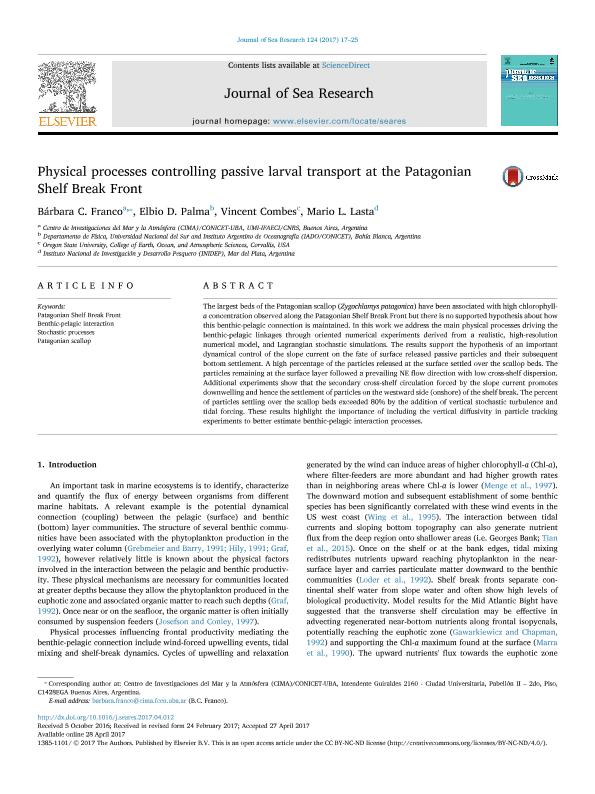Artículo
Physical processes controlling passive larval transport at the Patagonian Shelf Break Front
Fecha de publicación:
06/2017
Editorial:
Elsevier Science
Revista:
Journal of Sea Research
ISSN:
1385-1101
Idioma:
Inglés
Tipo de recurso:
Artículo publicado
Clasificación temática:
Resumen
The largest beds of the Patagonian scallop (Zygochlamys patagonica) have been associated with high chlorophyll-a concentration observed along the Patagonian Shelf Break Front but there is no supported hypothesis about how this benthic-pelagic connection is maintained. In this work we address the main physical processes driving the benthic-pelagic linkages through oriented numerical experiments derived from a realistic, high-resolution numerical model, and Lagrangian stochastic simulations. The results support the hypothesis of an important dynamical control of the slope current on the fate of surface released passive particles and their subsequent bottom settlement. A high percentage of the particles released at the surface settled over the scallop beds. The particles remaining at the surface layer followed a prevailing NE flow direction with low cross-shelf dispersion. Additional experiments show that the secondary cross-shelf circulation forced by the slope current promotes downwelling and hence the settlement of particles on the westward side (onshore) of the shelf break. The percent of particles settling over the scallop beds exceeded 80% by the addition of vertical stochastic turbulence and tidal forcing. These results highlight the importance of including the vertical diffusivity in particle tracking experiments to better estimate benthic-pelagic interaction processes.
Archivos asociados
Licencia
Identificadores
Colecciones
Articulos(CIMA)
Articulos de CENTRO DE INVESTIGACIONES DEL MAR Y LA ATMOSFERA
Articulos de CENTRO DE INVESTIGACIONES DEL MAR Y LA ATMOSFERA
Citación
Franco, Barbara Cristie; Palma, Elbio Daniel; Combes, Vincent; Lasta, Mario L.; Physical processes controlling passive larval transport at the Patagonian Shelf Break Front; Elsevier Science; Journal of Sea Research; 124; 6-2017; 17-25
Compartir
Altmétricas




